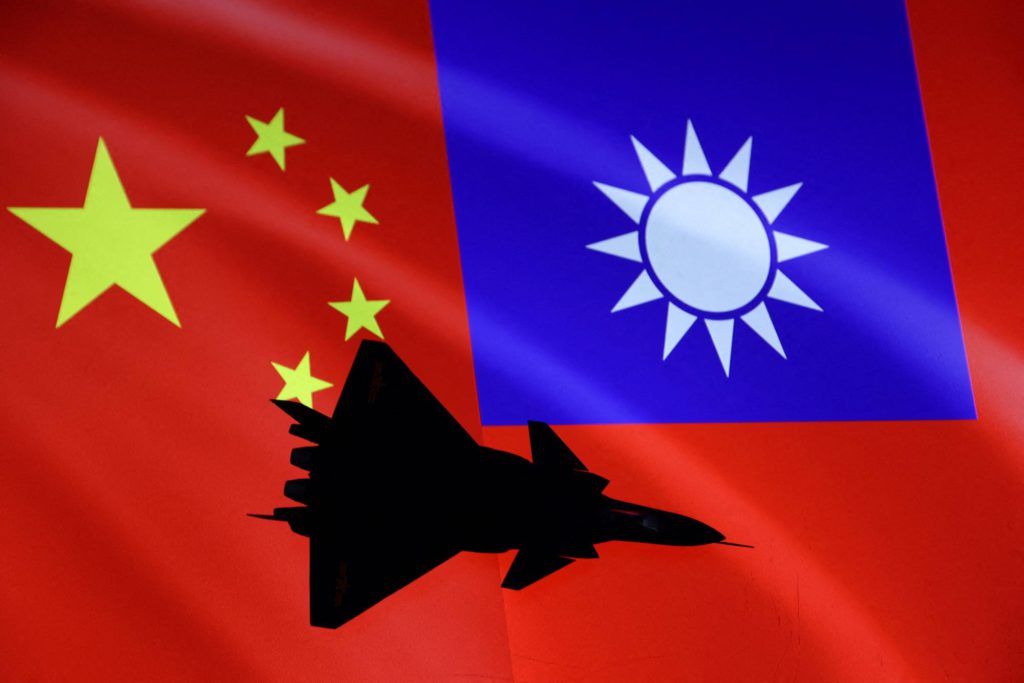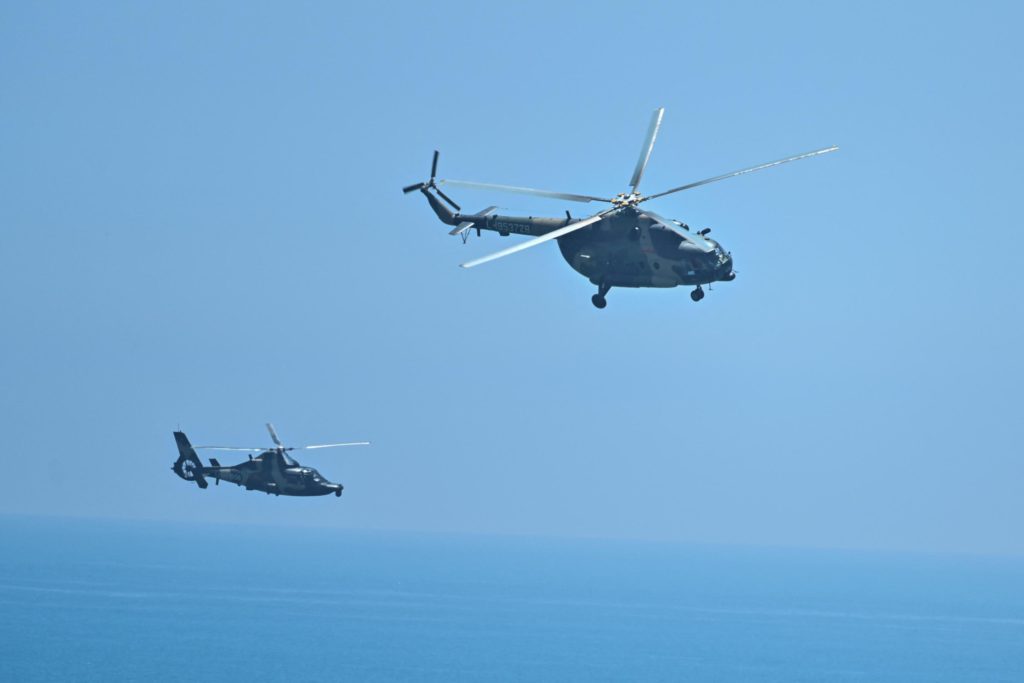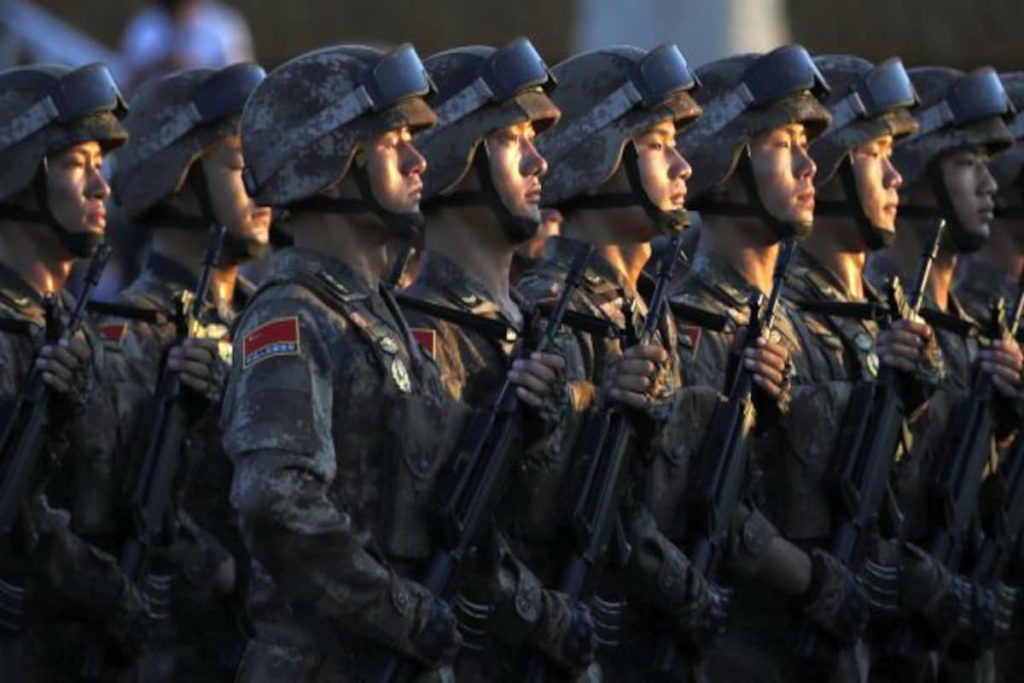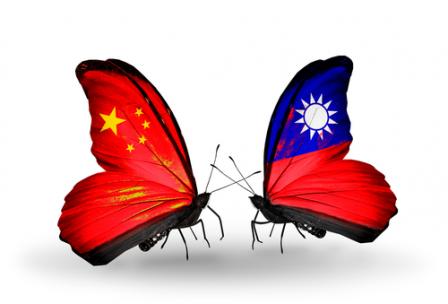Chinese military aircraft incursions into Taiwan’s air defense zone nearly doubled in 2022, with a marked increase in the use of bombers and fighter jets.
Taiwan, an autonomous island, lives under the threat of invasion by China, whose government claims sovereignty over its territory.
Read more on this subject: Taiwan sees more diplomatic pressure from China after Xi’s re-election
Relations between the two sides have been strained under Chinese President Xi Jinping and have worsened considerably in 2022.

The Chinese military has multiplied its incursions and held the largest military maneuvers in decades in the region to protest the visit in August of US House of Representatives Speaker Nancy Pelosi.
China has sent 1,727 aircraft into Taiwan’s air identification zone (ADIZ) by 2022, according to an AFP database based on daily updates released by the Taipei Defense Ministry.
The number far exceeds the 960 incursions in 2021 and 380 in 2020.
Also read: China sees ‘much faster timeline’ on taking Taiwan, Blinken warns
Fighter flights went from 538 in 2021 to 1,241 last year, while incursions of nuclear-capable H6 bombers went from 60 to 101.
Last year also saw the first drone incursion, with 71 reported by the Taiwanese military after Pelosi’s visit.
Military analysts believe China used such incursions to probe Taiwan’s defense, exhaust its obsolete Air Force, and express its dissatisfaction with Western support for Taipei.
Also read: Group of French MPs visit Taiwan after China’s military maneuvers
“They want to show their resolve and put pressure on the United States: don’t get too close to the red lines, don’t cross the red lines,” commented Lee Hsi-min, former chief of Taiwan’s Joint Chiefs of Staff, in an interview with AFP.
Strategic ambiguity
Washington recognizes China diplomatically above Taiwan, but remains Taipei’s main ally. It also rejects any forced change in Taiwan’s “status” and has congressional authorization to provide the island with the means necessary for its defense.

Support for Taiwan is a matter of bipartisan consensus in Washington, where fears are growing that China will use force against the island, especially after Russia’s invasion of Ukraine.
Read also: Facts and truths that must be ascertained about Nancy Pelosi’s visit to the Taiwan region of China
Washington maintains a policy of “strategic ambiguity” with Taiwan, whereby it does not clearly commit to come out in its defense in case of aggression.
Such a strategy aims to make China think about the cost of an invasion, while discouraging Taiwan from formally declaring independence.

Last year, U.S. President Joe Biden even said that U.S. troops would support Taiwan in the event of a Chinese invasion, but the White House backed off his comments.
China has used military aircraft to express its displeasure at specific events.
Also read: Biden says US forces would defend Taiwan in case of China invasion
Beijing sent 71 military aircraft on December 25 to conduct “attack exercises” in response to what it called “escalating collusion and provocations” by Washington and Taipei. This came shortly after Biden confirmed $10 billion in aid to Taiwan.
In August, there were a record 440 Chinese air incursions.
Pressure tactic
“The increasingly frequent incursions are worrying and force the Taiwanese side to be on perpetual alert to ensure that the PLA (People’s Liberation Army) does not use them as cover for an attack on Taiwan,” political and military analyst J Michael Cole told AFP.

He clarified, however, that the increase in incursions “does not mean that (China) is willing to anticipate the use of force against Taiwan, at least not in an invasion scenario, which would require months of mobilization.”
The air defense identification zone is different from a country’s airspace and includes a larger area where incoming aircraft must identify themselves to local air authorities.
Analysts see China’s increasing entry into Taiwan’s ADIZ as part of its tactic to keep pressure on.
Also read: Chinese in Portugal protest against Pelosi’s visit to Taiwan for “One China”
Beijing “conducts a war of attrition,” estimates Richard Hu, deputy director of the Center for Taiwan Studies at National Chengchi University.
He notes that China seeks to collect information and “readiness parameters,” such as how long it takes and the starting location of Taiwanese intercepts, but that an invasion would be too risky and costly.
In addition, the island’s mountainous terrain would be a challenge for any armed force.
“To take Taiwan by force, the PLA would face several vital challenges, such as sending hundreds of thousands of soldiers across the Taiwan Strait,” says Hu, a retired Taiwanese major-general.



